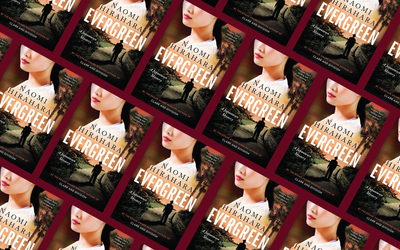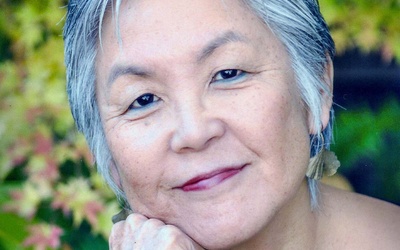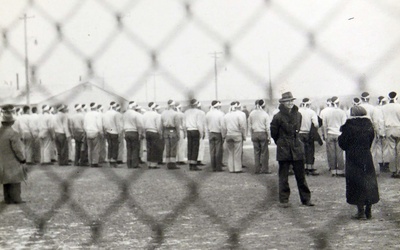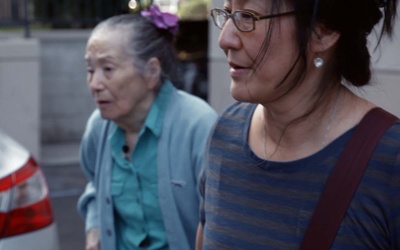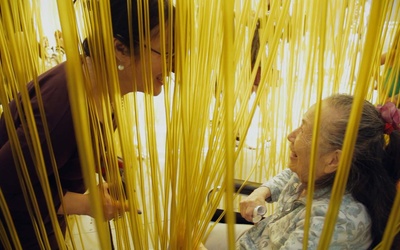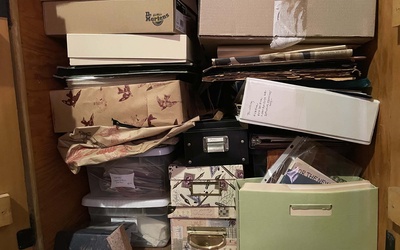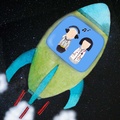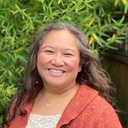
Tamiko Nimura
@tnimuraTamiko Nimura is an Asian American writer living in Tacoma, Washington. Her training in literature and American ethnic studies (MA, PhD, University of Washington) prepared her to research, document, and tell the stories of people of color. She has been writing for Discover Nikkei since 2008.
Tamiko just published her first book, Rosa Franklin: A Life in Health Care, Public Service, and Social Justice (Washington State Legislature Oral History Program, 2020). Her second book is a co-written graphic novel, titled We Hereby Refuse: Japanese American Resistance to Wartime Incarceration (Chin Music Press/Wing Luke Asian Museum). She is working on a memoir called PILGRIMAGE.
Updated November 2020
Stories from This Author
How Do We Remember Japanese American History? A Descendant's Perspective
April 4, 2024 • Tamiko Nimura
The following is adapted from a talk I gave at Plymouth Church in Seattle in February 2024. Good afternoon. I’m honored to be here with you all. I’m an Asian American writer from Tacoma, half-Filipina American, half-Japanese American. I have so many emotions being with you here today on this day before a national Japanese American Day of Remembrance. This commemoration began in Seattle back on Thanksgiving weekend in 1978, when a group of Asian American activists, many of them Japanese …
Naomi Hirahara’s Meticulously-Researched Mystery about Postwar Midcentury Japanese America
March 14, 2024 • Tamiko Nimura
There’s a haunting in Naomi Hirahara’s latest novel, Evergreen—a much-anticipated sequel to her novel, Clark and Division. After wartime incarceration in Manzanar and then resettlement in Chicago, Aki Ito, now Nakasone, and her family have returned to Southern California, and much has changed. The haunting comes in several forms—as the voice of Aki’s deceased older sister Rose, asking not to be forgotten; as the PTSD of Aki’s 442nd veteran husband Art Nakasone; and as the material losses and livelihood of the Ito …
Why the Language We Use to Describe JA Incarceration During WWII Matters
Feb. 23, 2024 • Tamiko Nimura
Out the front windows of our bus, we could see acres of sun-dried grasses during a hot and arid Northern California summer. On either side of the road stood barbed-wire fences, like the ones many of our family members spent years behind, surrounded by armed guards and guard towers, living in crowded tar-paper barracks with little to no privacy. “How many of you have been here before or were here during World War II?” our tour guide asked. A few …
“The Gold That Heals and Transforms”: A Conversation with Dr. Satsuki Ina
Feb. 7, 2024 • Tamiko Nimura
It’s an incredible honor for me to speak to Dr. Satsuki Ina. Ina is a Sansei activist, therapist, community healer, and now memoirist with The Poet and the Silk Girl: A Memoir of Love, Imprisonment and Protest (Heyday, March 2024). The book is a family memoir using various archives and documents of her parents during World War II as they navigated wartime hysteria, imprisonment, racism, and resistance. She was generous to share her time with me to speak about two …
Growing Up Nikkei As An Adoptee—A Conversation with Author Susan Ito
Nov. 13, 2023 • Tamiko Nimura
I “met” Susan Ito online close to a decade ago on a social media site, where we bonded over being Japanese American writers and bloggers. The online friendship deepened over time. I discovered that she even met my uncle Hiroshi Kashiwagi at a Tule Lake pilgrimage. And we finally met in person a couple of years ago over cookies and crafts, with a mutual friend. I’m so glad that Susan is telling her story with the 2023 publication of her …
One Fighting Irishman — A Conversation With Filmmaker Sharon Yamato
Oct. 17, 2023 • Tamiko Nimura
Wayne Mortimer Collins is an important name for my family. I first learned about this heroic, brash and outspoken attorney nearly twenty years ago while editing my uncle Hiroshi Kashiwagi’s first book, Swimming in the American (2005). I was surprised to see the book dedicated to Collins, and learned a bit about him while reading about my uncle’s struggle to regain his American citizenship after renouncing it under intense pressure by the United States government. My admiration for Collins only …
Wisdom Grown Wild: A Conversation with Filmmaker Rea Tajiri — Part 3
Sept. 10, 2023 • Tamiko Nimura
Read Part 2 >> TN: Do you think you make art as a way to fill in those gaps or to speak to these silences that are created by the lack of having these these artifacts or heirlooms? RT: Yeah, probably that, and certainly my father had a lot of stories that he would share. And honestly some of them were really like “what?” I was probably too young to handle some of these but they left a very intense …
Wisdom Grown Wild: A Conversation with Filmmaker Rea Tajiri — Part 2
Sept. 3, 2023 • Tamiko Nimura
Read Part 1 >> TN: I’ve been starting to think about what it is to write memoir and I’ve really felt so strongly that you [the writer/narrator] are the portal to this larger thing but at the very least you have to get your audience, in your space, in your doorway before they get to these larger things but the better you can get the portal prepared for your audience, the better the connection is, the better the relationship is. …
Wisdom Grown Wild: A Conversation with Filmmaker Rea Tajiri — Part 1
Aug. 27, 2023 • Tamiko Nimura
In Rea Tajiri’s documentary Wisdom Gone Wild, an elderly Nisei woman is sitting outside in a wheelchair. An installation of golden yellow streamers is billowing around her, as she’s joined by children running and playing through the space. The woman is laughing in delight, as the streamers and the children are constantly changing the way she’s seeing the world—and how she’s seen. The elderly woman has dementia, and she is Tajiri’s mother. The film reframes two intensely creative processes—filmmaking and …
Notes on Hoarding
June 7, 2023 • Tamiko Nimura
My mom tells me that when my oldest Nisei auntie died in 2016, there were so many boxes in the shed next to her house. Fruit crates, to be exact. Corrugated white cardboard, insulated. Interlocking flaps on the top—enough to let the air circulate over and around the Bartlett pears, Concord grapes, freestone peaches. Some release and some relief, a pleasure to close the boxes as the flaps locked into place, a slight struggle to open. What we hoarders recognize …


